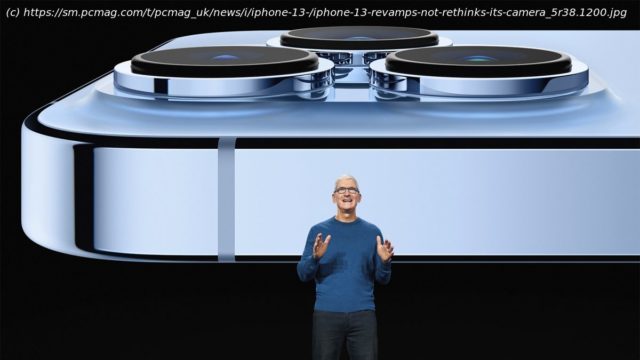The iPhone 13 and 13 Pro family improve and iterate on the iPhone 12 camera. The biggest updates are with video, now with depth of field control for the bokeh effect.
Apple’s yearly iPhone update is here, once again in four flavors. The standard iPhone 13 and small mini include dual-lens rear camera stacks, while the bigger 13 Pro and 13 Pro Max have triple lens arrays. Both camera systems are upgraded, with new optics and, behind the scenes, a fresh image-processing engine powered by the phones’ A15 Bionic processor. I’ve not had the opportunity to use the phone as of yet, but will do my best to break down the basics on the iPhone’s cameras from a photographer’s perspective. Computational Photography Rules Everything Around Me The first iPhones couldn’t compete with dedicated cameras, but the scales shifted slowly over time. While the traditional camera makers—Canon, Nikon, Sony, and the rest of the pack—put longer zooms and higher megapixel chips into pocket cameras, Apple put its eggs into the software basket, keeping the resolution at a sensible 12MP, and using computational photography to improve on its function. The iPhone 13 and 13 mini have dual rear cameras, a 13mm ultra-wide and 26mm wide angle. With the iPhone 13, the story is the same as it’s been for the past few generations—the phone uses high-powered processing and multiple lenses, surpassing what most point-and-shoot cameras can do for stills, and blowing them out of the water in video. Economics play a role. iPhones (and quality Android competitors, including the Google Pixel, OnePlus, and Samsung Galaxy lines) have incredible CPU power inside. A chip like the A15 is an overkill for a compact camera, but with a device like the iPhone it does much more. The days of debating whether a phone can replace a camera are over, at least for most of us. Family photographers who loved their digital Canon PowerShot or Nikon Coolpix can pick up a smartphone and enjoy speed and image quality beyond what a pocket camera can deliver. This is especially true if you’re an automatic-settings person—the iPhone’s HDR image processing is tuned for brightly lit snaps, and avoids the deer-in-headlights look you get from low-light shots lit mostly by flash. The triple-lens iPhone 13 Pro and Pro Max offer better lenses all around, plus a 77mm telephoto for portraits. There are still reasons to pick up a real camera. We covered them in detail a couple years back, comparing the iPhone 11 to Canon’s best point-and-shoot. Much of it is experiential—enthusiast cameras offer eye-level viewfinders, and tactile controls that are more pleasing to use than the iPhone’s big touch screen. If you’re the type of person who wants to fiddle with Raw files, or you simply prefer holding a camera in your hands, a camera is still a better fit. The iPhones have gotten a little better over the years, but small cameras haven’t made leaps and bounds. The G5 X Mark II from our iPhone 11 shootout is still its best point-and-shoot. Like other camera companies, Canon has put its development efforts into interchangeable lens mirrorless cameras, the type professionals and serious hobbyists prefer to use. iPhone 13 and 13 Pro Cameras The standard iPhone 13 and 13 mini use dual-lens rear cameras.






